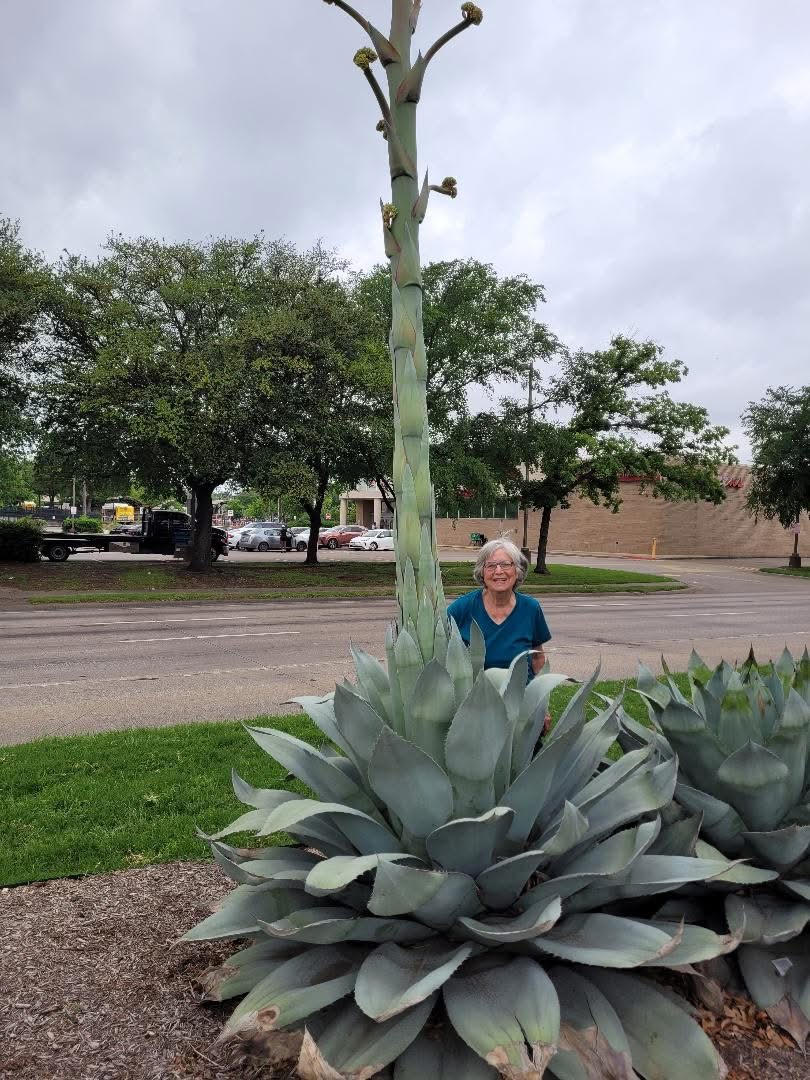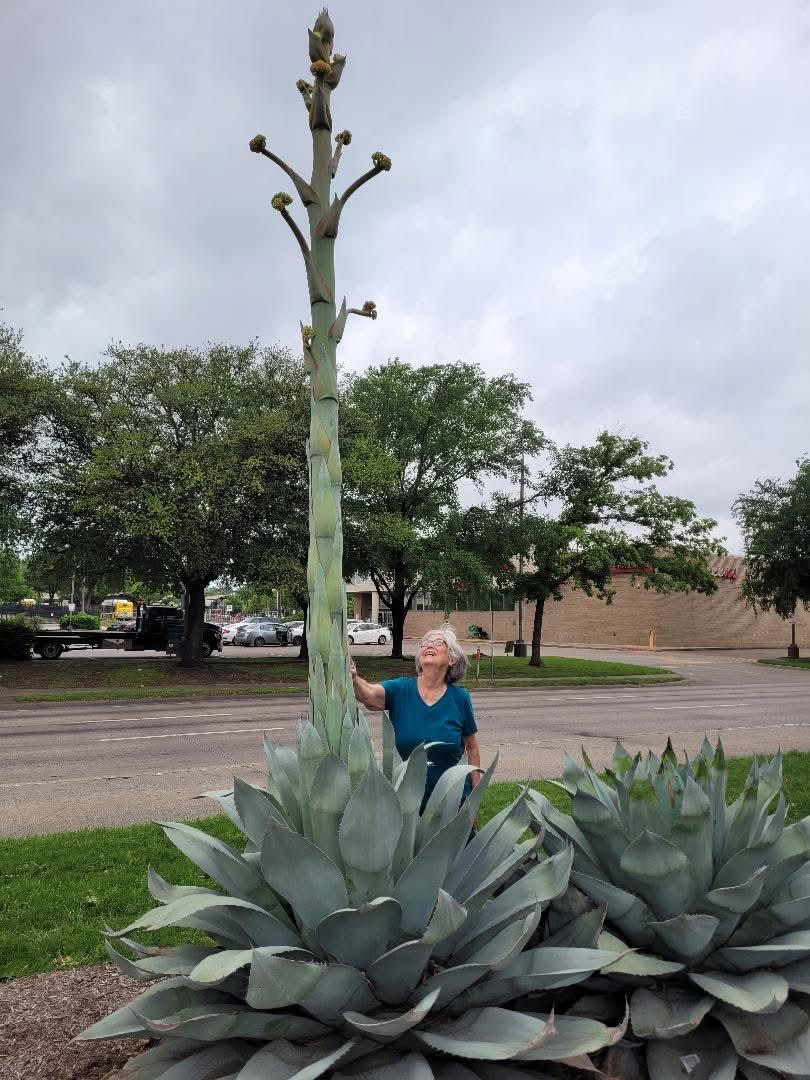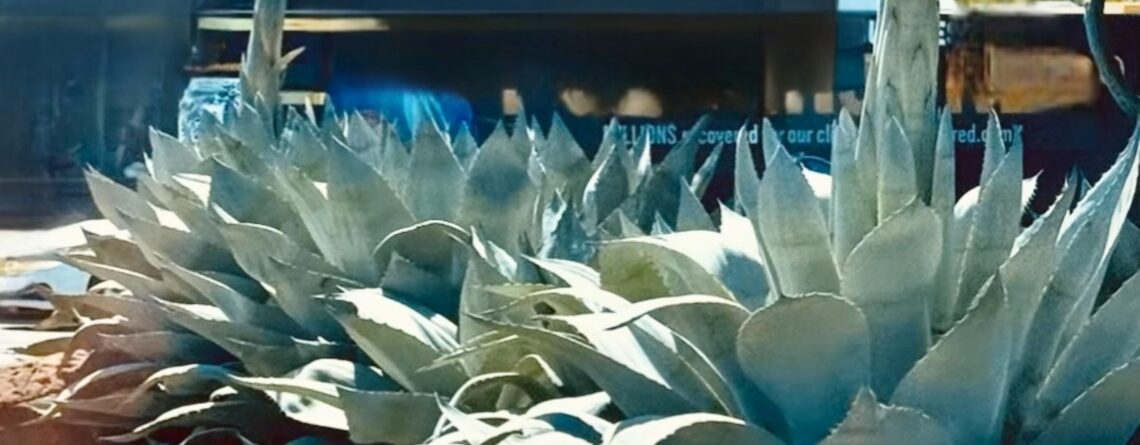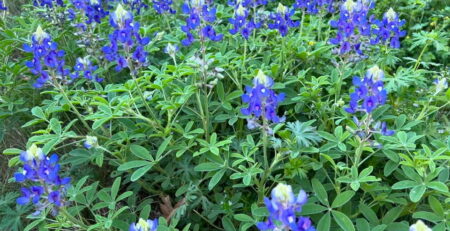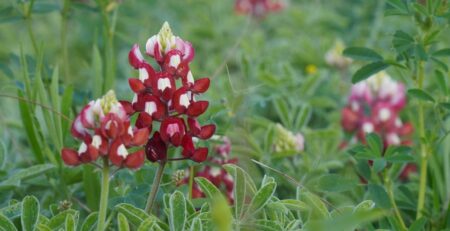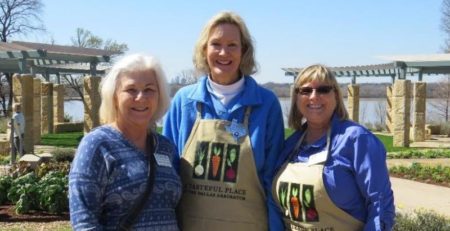Name This Plant!
A. That is an Agave ovatifolia, or Whale’s Tongue agave, named for its oval-shaped leaves and its apparent resemblance to a whale’s tongue. The stalk that is forming can grow up to 14 feet high and will produce side branches that will fill with dense clusters of large, greenish- yellow flowers. If the stalk looks a bit like an asparagus spear, it is because agaves are in the family Asparagaceae. Once the flowering period is over and seeds have been formed, the plant’s life cycle will have been completed, and the entire plant will die. Sometimes this phenomenon is referred to as a “death bloom.”

Monocarpic is the official term used to describe a plant that flowers once and then dies. Many common garden annuals are monocarps; they germinate, grow, bloom and set seed before dying off with the frost. Sunflowers and zinnias are just a few examples of monocarpic annuals. Monocarpic plants compensate for their short bloom time by producing large amounts of seeds to help ensure future generations of plants. Agaves, on the other hand, can live for many years before blooming, so they are considered to be “perennial monocarps.” Whale’s tongue agave may take anywhere from 8 to 20 years before it decides to bloom, and some agaves have been reported to live for up to 80 years. While some agaves produce offsets, or pups, which can grow into new plants, Whale’s Tongue does not. If you want to propagate new agaves, you will need to wait and collect seeds once they have developed. In some cases, the flowering branches may produce small vegetative structures, called bulbils, that can be harvested and used to make new plants.
Whale’s Tongue agave can grow anywhere from 2 to 4 feet tall, by 3 to 5 feet across. A noteworthy characteristic of the Whale’s Tongue is its cold hardiness (zones 7-10), so it can be grown outdoors year-round here in Texas. As with all agaves, it requires a site with excellent drainage. Roseanne Ferguson, Dallas County Master Gardener and propagation specialist at the Texas Discovery Gardens greenhouse, has additional tips for growing any agave in the landscape:
-
- Consider the ultimate size of the plant and allow for that growth.
- It is a desert plant and likes dry soil; too much water will rot it. Make sure the area has good drainage.
- Do not plant too near a pathway; punctures from the thorns can be painful!
- Some are cold hardy, but some are not.
- If large hail is anticipated, you may want to cover it; hail damage will not repair.
- Some produce lots of offsets (pups); this can be an annoyance. Research your plant before purchasing.
- There is nothing you can do to keep the plant from dying once it has bloomed.
References and resources for growing Agave ovatifolia:
